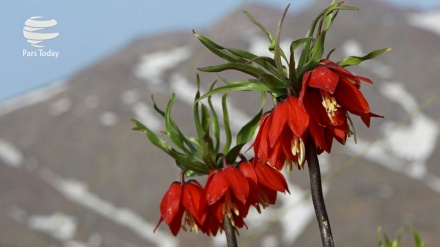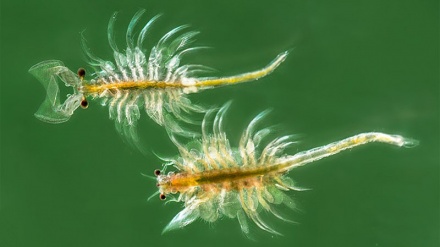Iran’s rare animal and plant species (4)
Today, we become familiar with Pallas’s Cat. The Pallas’s Cat is one of the 8th wildcat species in Iran and one of the most mysterious and rarest wildcats in Iran and the world.
Given that Pallas’s Cat lives in regions with dense flora, it has been referred to as the least known cat in the world. Pallas’s cat has a short chin, a wide face, and very small and round ears. It is relatively larger that domesticated cats. Its body is relatively larger and heavier than domesticated cats, while its legs are shorter that ordinary cats. It has large eyes. Its length stands at roughly sixty centimeters, and its tail stretches around 25 centimeters. Its average weight stands at 3.6 kilograms. Its body hair is pale gray, blended with dark yellow, coupled with vertical stripes which at times go undetected among its thick and dense body hair. Meanwhile, the most distinct feature of Pallas’s cat is presence of black spots on its forehead and small ears. Pallas’s cat hair is longer and thicker than other cats. The hairs of his lower parts are very long, and twice as long as its back and sides’ hair. These hairs insulate Pallas’s cat from frozen and snow-blanketed regions.
Pallas’s Cat usually lives in high altitudes. Although its short legs do not grant it the ability to escape at a high speed, it goes into hiding in the face of enemies, by taking advantage of its skin color. This stark feature of Pallas’s cat and the unpredictability of its route has led to the failure in usage of cameras for the study of this wildcat type; with just a few snapshots being taken by automatic cameras of this rare type of wildcat. For instance, the latest snapshot taken of Pallas’s cat in Iran dates back to the autumn of 2015; capturing images of this wildcat in northeastern Iran. This wildcat curiously studied the related camera and left the scene a few minutes later.
Pallas’s Cat lives in hiding and seeks its own territory, which usually covers an area of 3 to 4.5 square kilometers. These wildcats are usually nocturnal. But, at times, they remain active throughout the day and after sunset. This wildcat usually feeds on small mammals and birds, and resides inside caves, in the middle of stones, and the holes which are dug by other animals. Studies have proven that Pallas’s cat reaches puberty at the age of one. Its mating season is winter and its pregnancy lasts 66 days. In every birth delivery, Pallas’s cat gives birth to three to four kittens.
Pallas’s Cat lives in Central Asia in a number of different habitats such as deserts, plains, and foothills, and across the eastern coastlines of Caspian Sea, Turkmenistan, Uzbekistan, Tibet, Mongolia, Iran, Afghanistan, and Northern Kashmir. Iran is the westernmost habitat of Pallas’s cat in the world. In fact, Northern Khorasan in northeast Iran is known as the largest habitat of Pallas’s cat across the globe. In the past, Pallas’s cat was mistaken as leopard cubs at a far distance, discouraging anyone from approaching it; out of the fear of presence of female leopards in its vicinity. Locals refer to Pallas’s cat as the yellow cat. Meanwhile, in the recent years, a number of Pallas’s cats have been spotted in central and northwestern Iran, including Semnan Province.
It seems that one of the important threats against Pallas’s cat in Iran is posed by sheep dogs. Moreover, destruction of the habitats of this wildcat also poses a major threat against its existence. Drought and shortage of prey in nature has also caused problems for this type of wildcat. One of the other threats posed against this wildcat is the presence of opportunist poachers. Throughout the year, these poachers sometimes capture these wildcats alive, in a bid to sell them in the black market as domesticated cats; thereby endangering these wildcats and their kittens. This is because even if the caged wildcats are later freed in nature, they do not have the courage to return to their nests, leaving the related kittens on the verge of death.
In the meantime, the threats posed by poachers have led the authorities of the Environment Protection Organization to seriously deal with these threats, and to ask locals to report the related poaching incidents in the shortest possible time.
MR/ME


